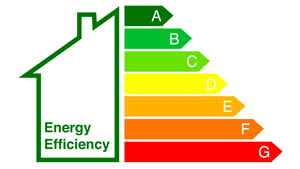Understanding Surveys
Understanding Surveys
Which One Is Right For You?
When buying a home, selecting the right property survey is crucial to ensuring you're making a sound investment. From a basic mortgage valuation to a comprehensive building survey, knowing what each type entails will help you choose the right one for your needs. Let’s explore the differences between these surveys and which might be best for your situation.
Mortgage Valuation: A Brief Overview
A Mortgage Valuation is often misunderstood as a full survey, but it is important to note that this inspection is carried out solely for the benefit of the lender. It is a quick, typically 30-minute visit to the property to determine whether it is worth the loan being requested.
- Who conducts it? A valuer hired by the bank or building society.
- Who benefits? Primarily the lender, not the purchaser.
- What’s inspected? Only the aspects necessary to approve the mortgage.


Property Condition Ratings
The traffic light system is a widely used method to present findings across the three main types of property surveys - Home Condition Report, HomeBuyer Survey, and Building Survey - providing clear visual indicators of urgency.
Home Condition Report, the system highlights issues with minimal detail, where green indicates no action required, amber signifies areas needing attention in the future, and red flags critical issues requiring immediate repair.
Home Buyer Survey adds more context, combining condition ratings with advice on potential repairs and legal matters, using the traffic light system to categorize the severity of problems.
Building Survey, the most comprehensive option, uses the same system but delves deeply into structural concerns and includes detailed explanations, often tailored to older or more complex properties. This approach ensures buyers can easily assess risks and make informed decisions.
Home Condition Report: Understanding the Basics
A Home Condition Report offers a straightforward snapshot of the property's condition, ideal for modern or recently built homes. It provides a traffic light system that ranks different parts of the house based on their condition:
This is a Level One survey, which is aimed at properties in relatively good condition.
Key Features:
Easy-to-understand traffic light ratings.
Ideal for newer homes.
Includes advice for your legal team regarding issues that might affect your purchase.
Home Buyer Survey: A More Detailed Inspection
The Home Buyer Survey is a more thorough assessment that takes around 3 hours. It is specifically for the purchaser’s benefit and provides a deeper insight into the property’s overall condition. Every major part of the construction is examined, offering a detailed report.
What’s covered? Everything from the structure to smaller potential issues.Who benefits? The purchaser, as it reveals problems before the sale is finalized.
This is a Level Two survey and is recommended for any property purchase, regardless of its age or appearance. Identifying even minor issues early can save you from expensive repairs down the line or give you negotiation power.
Optional Add-on: The survey can include an Independent Valuation to determine if the asking price is fair based on the property’s condition.
Note: If any problems are found, you have the power to negotiate the price or request repairs from the seller before finalizing the purchase.
Building Survey: Comprehensive Analysis for Older Homes
A Building Survey, also known as a structural survey, is the most in-depth report available and is critical when purchasing older or unusual properties. This inspection covers everything, from the loft to the foundations, ensuring no structural or hidden issue is missed.
Duration: Typically takes a full day due to the thorough nature of the inspection.Scope: Examines every aspect of the property’s construction and structure, including detailed investigations into hard-to-reach areas like the loft.
This is a Level Three survey and is essential for homes with potential hidden problems. Without this survey, buyers are taking a gamble on the property’s condition.
Note: A Building Survey provides peace of mind and is invaluable for safeguarding your investment, especially with older or unconventional properties.
Which Survey is Right for You?
Selecting the right survey depends on the type and age of the property, as well as your personal level of risk tolerance. Here’s a quick guide to help you decide:
Mortgage Valuation: Essential for mortgage approval but offers little insight into the property’s condition.
Home Condition Report: Best for newer properties with little expected wear and tear.
Home Buyer Survey: Recommended for most property purchases, balancing detail with cost.
Building Survey: Crucial for older, larger, or unusual homes where hidden issues could exist.
Survey Comparison Chart
Duration: ~1 hour
Best For: Newer properties
Level: Level 1
Notes: Ideal for quick assessments; focuses on immediate concerns rather than structural details.
Duration: ~3 hours
Best For: All properties
Level: Level 2
Notes: Essential for negotiating repairs or price before finalizing the purchase; covers a broader range of issues compared to a Mortgage Valuation.
Duration: ~4+ hours
Best For: Older or unusual properties
Level: Level 3
Notes: Essential for those looking at older or unique properties; provides in-depth insight into structural integrity and any potential issues.
Choose the survey type that best suits your needs!
Protecting Your Investment
Whether you're buying a modern home or a historic property, choosing the right survey ensures you know the full picture before making such a significant financial decision. For expert advice and to arrange the appropriate survey, contact us today.
New Property Check List
Ensuring Quality in Your New HomePurchasing a new property is a significant investment. Unfortunately, it’s estimated that 85% of new properties have issues within the first few months of ownership. Our thorough examination process is designed to identify potential problems before you move in, ensuring your dream home is in perfect condition.
Comprehensive Inspections
Our team will perform a meticulous review of your new property, from structural integrity to finishing touches, allowing you to settle in with peace of mind.
Energy Performance Certificate (EPC)
Understanding EPC RatingsAn Energy Performance Certificate (EPC) assesses the energy efficiency of your property, rated from A (most efficient) to G (least efficient). Since their introduction in England and Wales in 2007, EPCs have become a legal requirement for selling, letting, or constructing buildings.
Importance of Energy Efficiency
A good EPC rating not only enhances the value of your property but can also lead to significant savings on energy bills. Our experts are here to help you understand your property's energy performance and what improvements can be made.


